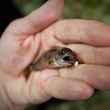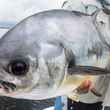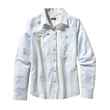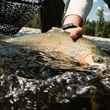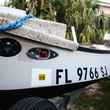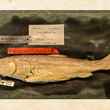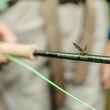If you have never seen Green Drakes and Coffin Flies hatch, well, I recommend you make the effort to do so. I had always been somewhat dismissive of folks who chased these blue-chip hatches. I'm partial to the hatches of pale yellow mayflies on late spring evenings on my home waters so I never really got into being on rivers outside my normal range just to fish something exotic. It was an error not to pay attention to the Drakes. They're pretty damn fantastic.
In mid-June Jonny and I were heading west with the hope of taking some carp in Indiana. Driving eight hundred miles to fish for carp may not seem like the most sensible thing but we had good reasons. It's not something I'd done before -- neither the epic road trip nor carp fishing -- so I was looking forward to having an adventure. But being a trout angler I couldn't tolerate the thought of driving so far, passing some of the finest trout streams in the east, without stopping to wet a line.
Penns Creek, our original target, was bank full from storms that had tracked across Pennsylvania the week before. We set our sights on the Delaware system which seemed to have been spared. The fly shop mentioned Drakes and Coffins and when I saw the size of the dries and emergers I had a "holy shit!" moment. It would be quite something to see a trout pluck one of these from the surface.





